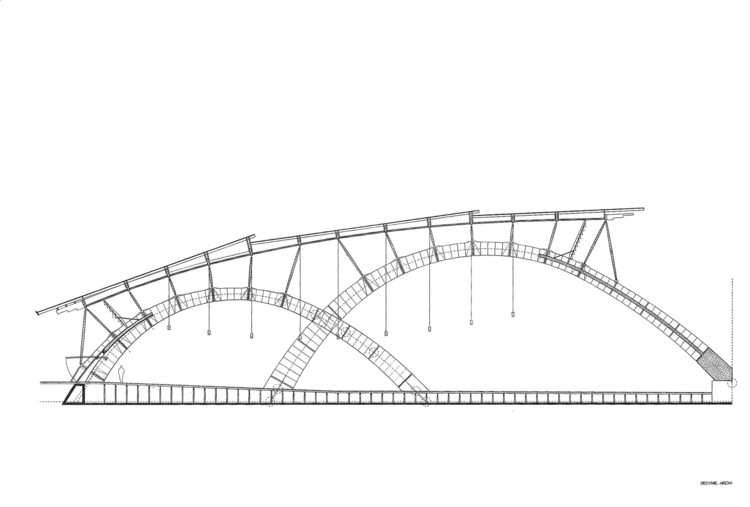
-
Architects: Renzo Piano Building Workshop
- Area: 20400 m²
- Year: 2004
-
Photographs:Michel Denancé, Gianni Berengo Gardin, Vittorio Grassi, Christian Richters
-
Manufacturers: TECU®, Campolonghi

Text description provided by the architects. The church dedicated to Padre Pio is a sacred building with ample open space for the public, yet it’s lines are deliberately non-monumental and clearly exude a warm welcome. The project was based on two fundamental principles: the use of a single type of stone as a symbol of oneness with its surroundings, and the idea of the church as a home open to all. The square leads naturally into the main body of the church, the forward-sweeping wing-shaped roof and the ample glass frontal panes – with the story of Revelations on great coloured tapestries – are clear messages of inclusion.

The yearly increase in flow of pilgrims to the town of San Giovanni Rotondo called for the construction of a new church, one with a wide path leading to it and vast open spaces to receive and organise the masses of pilgrims who periodically fill this raised plain of the Gargano region, home to Padre Pio. The church was built adjacent to the monastery and, its vast size notwithstanding, its novel architecture carved out a nonetheless protected place of prayer, a shared space which blended in with its surroundings and looked out into the distance at the sea.

The arched structure of the church was made out of blocks of beige Apricena stone. The decision to use this stone as the sole building material for the new part was fundamental and rendered it a homogenous whole. The fact that the church was being built in a seismically active region was further impetus to explore new and innovative structural solutions. Rigidity also means fragility, but thanks to the techniques used to assemble and pre-compress the massive blocks, this monumental arched project is able to dissipate energy and absorb the stress created by earthquakes.

The 22 supporting arches are lined up in two rows (interior and exterior) in a radial pattern that flows outwards from the altar, with decreasing sizes and an accelerated rhythm as they move further away. The arches support the secondary wooden structure for the overlapping roof panels secured onto sets of steel struts. Even this distance, this floating of the roof in seemingly empty space, is an integral feature of the structural autonomy of the parts, allowing them to move independently during an earthquake and thus increasing their resistance factor.

The rounded surfaces of the roof follow the spiral thrust of the structure and lean on one another lightly, letting sunlight filter through to the inside. Just like in 17th-century churches and paintings, a single ray of light shines on the altar, the centre of the liturgical celebrations.
























